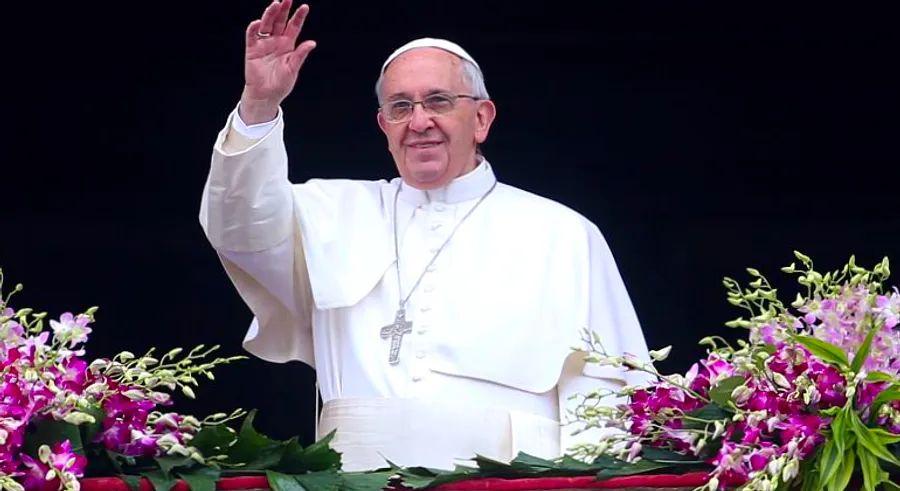Follow Pope Francis' journey in Argentina: Explore his early life and legacy

The Buenos Aires railcar on Line A is modern, air-conditioned, and pristine, just like its endpoint, the Flores metro station. It's no coincidence that Pope Francis hails from Flores.
Thanks to the Pope, I'm standing outside the Basilica of San Jose at 3 p.m. This 1880s church boasts Corinthian pilasters and a grand Italianate clock tower.
Though it seems like an oversized church for a small middle-class parish, Flores in the 19th century was home to wealthy landowners whose estates hosted political gatherings and extravagant celebrations.
I'm about to embark on a tour of Pope Francis' early haunts. Daniel Vega, a passionate guide with clear and loud Spanish, greets me and three women from northern Argentina. True to Latin American tradition, we spend the first 15 minutes chatting and getting acquainted.
Our journey begins at the basilica, where Daniel explains that a 17-year-old Jorge Bergoglio – later known to the world as Pope Francis – experienced a life-changing moment in the confessional to our left.
Fleeing Fascism
“It was springtime, September 1953,” Vega recounts. “Jorge was on his way to meet his friends in the square, but as he passed by the basilica, he felt an overwhelming urge to confess. He didn’t hear voices or see visions, yet that simple act of confession marked a profound turning point. He left with a deep sense that he was destined to become a priest.”
And his friends? “He forgot all about them and went straight home,” Vega says.
Vega continues, sharing the Bergoglio family’s story: they had a candy shop in Portacomaro, Italy, before fleeing Mussolini’s fascist regime. In January 1929, they boarded the Giulio Cesare bound for Argentina, seeking refuge from the oppressive government.
Daniel explains that delays in selling their candy shop caused the Bergoglio family to miss an earlier sailing of the Principessa Mafalda, which tragically sank off Brazil’s coast in October 1927, claiming 314 lives. Whether this is a coincidence or divine intervention, the story has become part of local lore.
Papal treats: Ice cream and pizza

The Pope’s widespread fame has brought a boost to local businesses, from restaurants to small shops, benefiting from his global influence.
In front of us is a pizzeria playfully named “Habemus Pizza y Pasta,” a nod to the iconic “Habemus Papam” declaration that follows the election of a new pope.
A group of Argentine ice cream makers has even created a special flavor for Pope Francis: a refreshing blend of vanilla and lemon, designed in the papacy’s signature colors of white and yellow.
We stop outside a simple white, one-story house at Calle Varela 268. The windows are barred, and the twin entrance doors lead to two separate flats. It looks ordinary, except for the plaque: “Pope Francis was born here.”
Until October 2014, another address on Calle Membrillar was thought to be the Pope’s childhood home. In fact, when this tour first began, Pope Francis himself remarked: “Which house do they go to?” When asked for clarification, he waved it off, saying, “Let the poor neighbors live in peace.”
But that’s no longer the case.
Historian Daniel Vargas uncovered this address by tracing the Pope's birth certificate and sending a copy to the Vatican. He was stunned when his office phone rang – Pope Francis wanted to speak with him.
The call was one of confirmation. Little Jorge Bergoglio spent his first five years living at this very address.
A love letter

The family only moved to a larger house on Calle Membrillar when it grew in size. Our next stop, just a few blocks south, is unmistakable.
Escuela Pedro Antonio Cervino stands out with its bright red facade. This primary school, which Pope Francis attended, is eerily quiet during summer vacation.
After Cardinal Bergoglio became Pope, a woman from the neighborhood claimed to have been his childhood sweetheart.
“He wrote me a love letter,” she recalled. “And he said if I didn’t marry him, he’d become a priest!”
The media insisted on seeing the letter. “When my father found it, he ripped it up,” she explained. “We were only 12!”
As we head further south, the neighborhood shifts to a more residential feel. A gentle breeze greets us as we ascend the hill, passing several newly painted colonial-style homes with immaculate patios.
Pope Francis' father was an accountant and comfortably well-off. At Membrillar 531, we find the house where Jorge Bergoglio spent his youth. However, as a relic of the Pope’s past, it’s a bit of a letdown since it has been entirely rebuilt. The Buenos Aires Tourist Board must have breathed a sigh of relief when the more picturesque Varela house was discovered.
Soccer stars and early education

Across from us is a square where Pope Francis used to play soccer as a child. He remains a loyal fan of his local team, San Lorenzo de Almagro (nicknamed ‘The Saints’). After his election, the team proudly featured his image on their jerseys for their next match. They won 1-0 thanks to an own goal from their opponents. Here, everyone believes it was a miracle.
The final stop on the Pope’s journey is the kindergarten at Misericordia College. It’s here that he made his First Communion and learned to count to ten, often hopping down the front steps.
“He returned to the college later as Archbishop of Buenos Aires,” says Vega. “They still talk about how he would help wash the dishes.”
It’s likely memories like these that led to Pope Francis having his very own tour.
Evaluation :
5/5



